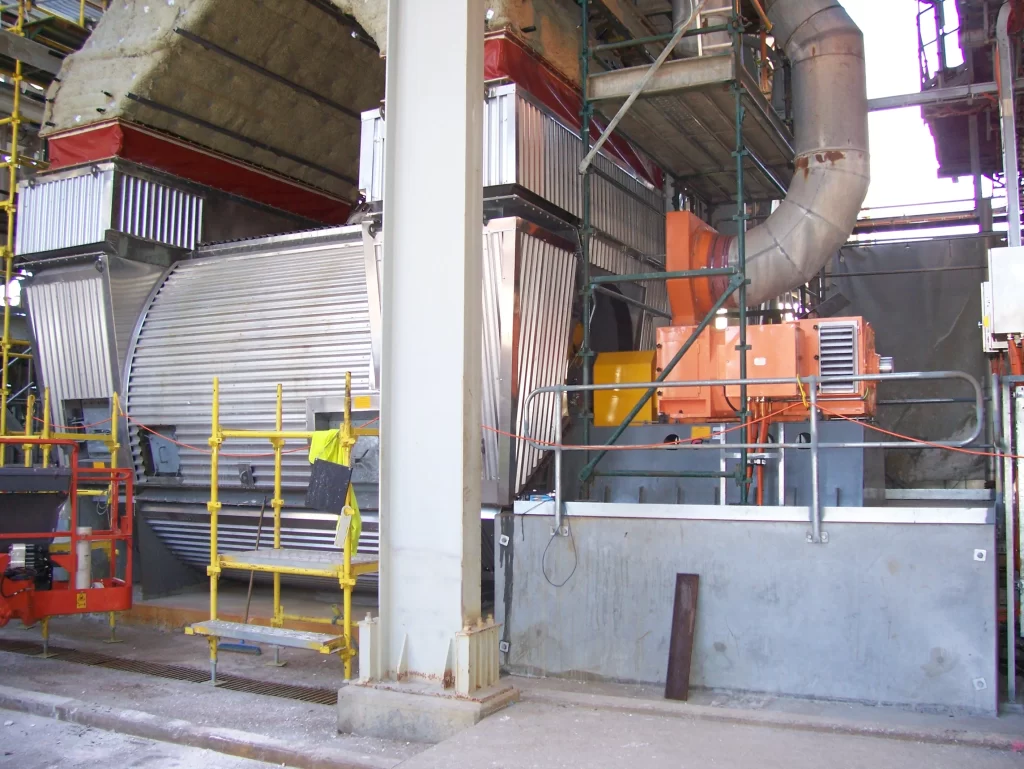ID Fans for Blower
In industrial settings, particularly in power generation and large-scale heating applications, id fans for boiler play a crucial role in producing steam or hot water. ID (Induced Draft) fans are essential components in boiler systems, tasked with maintaining efficient combustion and proper air circulation within the boiler chamber. This article explores the key content and features of ID fans, highlighting their critical role and design considerations.
Induced Draft (ID) fans play a crucial role in various industrial processes, particularly in power plants and large-scale manufacturing facilities. These fans are essential components of systems that involve the movement of air or gases, operating under specific conditions to maintain efficiency and safety.
1. Purpose and Function: ID fans are installed on the outlet of boilers to draw combustion gases through the boiler and out into the atmosphere via the chimney or stack. Their primary function is to create negative pressure (or draft) within the boiler, ensuring that the flue gases are properly vented and that combustion air is supplied at the right rate for efficient fuel burning.
2. Design Features:
Fan Blades and Housing: ID fans are typically centrifugal fans designed to handle hot gases with high efficiency. They feature robust blades and a durable housing constructed from materials resistant to corrosion and heat, such as stainless steel or high-grade alloys.
Variable Speed Control: Modern ID fans often incorporate variable speed drives (VSD) to adjust fan speed based on boiler load. This capability enhances energy efficiency by matching airflow to actual combustion requirements, reducing energy consumption during partial loads.
Silencers and Dampers: To minimize noise pollution and regulate airflow, ID fans may include silencers and dampers. Silencers attenuate noise generated by high-velocity gases, while dampers control airflow rates by adjusting the fan inlet or outlet openings.
Bearings and Seals: ID fans are equipped with heavy-duty bearings and seals capable of withstanding high temperatures and operational stresses. Proper lubrication and maintenance are essential to ensure long-term reliability and performance.
3. Control and Monitoring:
Automation and Integration: ID fans are often integrated into the boiler’s control system, allowing for automated operation and remote monitoring. This integration ensures that draft conditions are continuously optimized for efficient combustion and compliance with emission standards.
Monitoring Parameters: Key parameters monitored include fan speed, motor temperature, vibration levels, and airflow rates. Real-time data allows operators to promptly address any deviations from optimal operating conditions, thereby ensuring safe and reliable boiler operation.
4. Efficiency and Environmental Considerations:
Energy Efficiency: ID fans contribute to overall boiler efficiency by maintaining the proper draft, which optimizes combustion and reduces fuel consumption. Variable speed control further enhances energy efficiency by adapting fan speed to varying load demands.
Emission Control: Proper draft control facilitated by ID fans helps minimize emissions of pollutants such as carbon monoxide (CO) and nitrogen oxides (NOx). This is crucial for compliance with environmental regulations and ensuring sustainable operation.
5. Maintenance and Safety:
Regular Inspections: Scheduled inspections and maintenance are essential to ensure ID fan reliability and safety. This includes checking for wear and tear, lubricating bearings, inspecting seals, and cleaning fan blades to maintain optimal performance.
Safety Features: ID fans are equipped with safety features such as overload protection, temperature sensors, and emergency shutdown systems. These features mitigate risks associated with fan malfunction or operational anomalies, safeguarding personnel and equipment.


